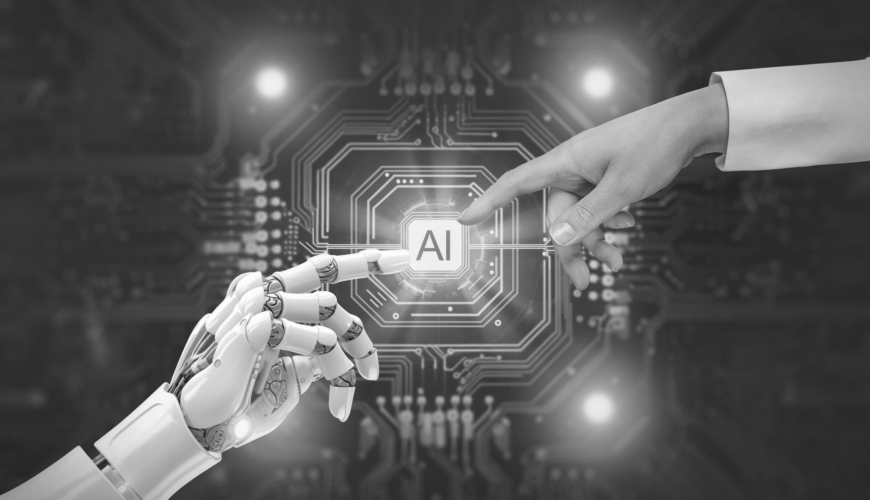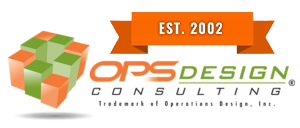In the world of supply chain management (SCM), where precision, efficiency, and agility are paramount, businesses have been consistently searching for ways to streamline operations while reducing human intervention. One of the key concepts that has emerged from this search is “Low-Touch Planning” in the supply chain. This approach is revolutionizing the way businesses forecast, plan, and execute their supply chain processes.
Low-touch planning reduces the manual input required for managing supply chain activities by integrating advanced technology, automation, and data-driven decision-making. It emphasizes minimizing human intervention, automating routine tasks, and allowing real-time data and artificial intelligence (AI) to drive the decision-making process.
This article will delve into the concept of low-touch planning, explore its relevance in modern supply chains, and provide real-world examples to help illustrate its practical applications.
What is Low-Touch Planning?
Low-touch planning in supply chain management refers to an approach where the planning process requires minimal human intervention, relying heavily on automation, artificial intelligence (AI), machine learning (ML), and data analytics to generate forecasts, optimize inventories, and make decisions. Essentially, the focus is on streamlining operations and making them as efficient as possible with minimal manual oversight.
Traditionally, supply chain planning involved various manual processes, such as entering data into systems, making forecasts based on historical data, manually adjusting inventory levels, and more. These tasks were often time-consuming, error-prone, and required significant human resources.
Low-touch planning aims to eliminate these inefficiencies by using technology to automate much of the decision-making process. The goal is to allow businesses to focus on strategic decision-making rather than operational execution, reducing human error and increasing efficiency.
The Importance of Low-Touch Planning in Supply Chain
Low-touch planning is becoming increasingly important due to several factors that are reshaping the global supply chain landscape:
-
Complexity of Supply Chains: Modern supply chains are highly complex, involving multiple stakeholders, suppliers, manufacturers, and distribution centers. Managing these complexities manually is time-consuming and prone to errors. Low-touch planning automates routine tasks, making it easier to manage these complexities.
-
Increased Demand for Real-Time Decision Making: In today’s fast-paced world, businesses must respond quickly to changes in demand, supply disruptions, and other challenges. Low-touch planning allows for real-time data analysis, enabling faster and more informed decision-making.
-
Cost Reduction: Human resources are expensive, and relying heavily on manual processes can increase operational costs. Low-touch planning reduces the need for extensive human input, lowering labor costs and improving the bottom line.
-
Error Reduction: Human errors in forecasting, inventory management, or logistics planning can lead to costly mistakes, such as stockouts or overstocking. By relying on automation and advanced algorithms, low-touch planning reduces the likelihood of such errors.
-
Sustainability and Efficiency: Low-touch planning leads to more efficient resource use, reducing waste in the supply chain. Automated systems can help optimize transportation routes, reduce fuel consumption, and minimize excess inventory, contributing to a more sustainable and eco-friendly supply chain.
-
Scalability: As businesses grow, managing an expanding supply chain becomes more challenging. Low-touch planning scales easily, making it possible to handle increased volumes of data and more complex supply chain networks without a proportional increase in human resources.
Key Technologies Enabling Low-Touch Planning
Several key technologies are enabling the shift toward low-touch planning in supply chains. These technologies leverage automation, data analysis, and real-time decision-making capabilities to reduce the need for human intervention:
-
Artificial Intelligence (AI): AI is a central technology in low-touch planning, particularly in areas such as demand forecasting, inventory management, and route optimization. AI systems can analyze vast amounts of historical data to predict future demand patterns, optimize inventory levels, and even suggest the best suppliers or logistics routes.
-
Machine Learning (ML): Machine learning is a subset of AI that allows systems to learn from data and improve over time. ML algorithms can be used to improve the accuracy of demand forecasts, detect anomalies in supply chain operations, and optimize inventory levels automatically.
-
Automation and Robotics: Automation technologies, such as robotic process automation (RPA), are being used to handle repetitive tasks such as data entry, invoicing, order processing, and more. Robotics are also being used in warehouses and distribution centers to automate picking, packing, and shipping processes, further reducing the need for human input.
-
Cloud Computing: Cloud-based supply chain management platforms enable companies to access real-time data, collaborate with suppliers, and automate planning processes. Cloud platforms can host advanced analytics tools, AI systems, and other software that support low-touch planning.
-
Internet of Things (IoT): IoT devices, such as smart sensors, can provide real-time data on inventory levels, transportation conditions, and equipment performance. This data can be used to optimize planning processes, such as replenishment schedules and shipment tracking, with minimal human intervention.
-
Robust Analytics Tools: Advanced analytics tools provide valuable insights into demand trends, supplier performance, and inventory levels. These tools use historical data and predictive models to forecast future needs, enabling businesses to make proactive decisions without relying on manual intervention.
Benefits of Low-Touch Planning
Low-touch planning brings several advantages to the supply chain. These benefits include:
-
Improved Accuracy: Automation and AI-driven systems are typically more accurate than manual processes, leading to better forecasting, inventory management, and demand planning.
-
Cost Savings: By reducing the need for manual intervention and optimizing resource allocation, low-touch planning helps companies save on labor costs, reduce excess inventory, and improve operational efficiency.
-
Increased Speed: Automation accelerates various processes, from order fulfillment to inventory tracking, leading to faster decision-making and improved responsiveness to market changes.
-
Better Collaboration: Low-touch planning tools, often powered by cloud computing, facilitate better collaboration among supply chain partners. Real-time data sharing ensures that all stakeholders are aligned and can make timely, data-driven decisions.
-
Enhanced Flexibility: The use of AI, machine learning, and other technologies allows businesses to quickly adapt to changes in the supply chain environment, whether due to market fluctuations, natural disasters, or global disruptions.
Examples of Low-Touch Planning in Action
Several companies have already embraced low-touch planning to streamline their supply chain operations. Here are a few examples:
1. Amazon
Amazon is a pioneer in using advanced technologies for supply chain management. The company uses AI and machine learning algorithms to forecast demand, optimize inventory levels, and route deliveries. Through its fulfillment centers, Amazon has automated much of its order fulfillment process with robotics, drastically reducing the need for human intervention in inventory management and order picking.
Additionally, Amazon uses AI to predict customer purchasing behavior and optimize its supply chain accordingly, ensuring that products are available when customers want them. This low-touch planning system has helped Amazon maintain its competitive edge by delivering products faster and more efficiently than many other retailers.
2. Walmart
Walmart has leveraged its extensive supply chain network to implement low-touch planning through automation and advanced analytics. The retailer uses a centralized platform powered by AI to track inventory levels across thousands of stores and suppliers. By utilizing predictive analytics, Walmart can automatically replenish inventory to meet demand without needing manual input.
Walmart has also invested heavily in automated warehouses, where robots and AI systems handle tasks such as sorting products, picking orders, and managing stock levels. This has allowed Walmart to reduce labor costs and improve the efficiency of its supply chain operations.
3. Unilever
Unilever, a global consumer goods company, has implemented low-touch planning to streamline its supply chain management. The company uses machine learning algorithms to forecast demand and optimize inventory management. By analyzing real-time data from various sources, Unilever can ensure that its products are available at the right time and in the right quantities across its global supply chain.
Additionally, Unilever employs advanced analytics tools to assess supplier performance, track shipping conditions, and monitor inventory levels, all with minimal manual intervention. This approach has helped Unilever reduce waste, cut costs, and improve its sustainability efforts.
Challenges and Considerations in Implementing Low-Touch Planning
While low-touch planning offers numerous benefits, there are also challenges associated with its implementation:
-
Initial Investment: Implementing low-touch planning technologies, such as AI, machine learning, and automation, can require significant upfront investment in software, hardware, and training.
-
Data Quality: Low-touch planning relies heavily on accurate and up-to-date data. Poor data quality or insufficient data can result in inaccurate forecasts and suboptimal decision-making.
-
Integration with Existing Systems: Many organizations have legacy systems that may not be compatible with new low-touch planning technologies. Integrating these systems can be complex and time-consuming.
-
Change Management: Shifting to a low-touch planning model often requires a cultural change within the organization. Employees may be resistant to new technologies, and organizations need to provide adequate training and support to ensure a smooth transition.
-
Cybersecurity Risks: The increased reliance on technology in low-touch planning raises concerns about cybersecurity. Organizations must ensure that their supply chain data and systems are adequately protected from cyber threats.
Conclusion
Low-touch planning is a transformative approach to supply chain management that reduces the need for manual intervention through the use of advanced technologies such as AI, machine learning, automation, and cloud computing. By automating routine tasks and enabling real-time decision-making, businesses can enhance the accuracy, speed, and efficiency of their supply chains while reducing costs.
The benefits of low-touch planning, including improved forecasting, reduced errors, and better collaboration among supply chain partners, make it an attractive solution for businesses looking to stay competitive in the modern, fast-paced business environment.
As demonstrated by leading companies such as Amazon, Walmart, and Unilever, the adoption of low-touch planning is already providing tangible results. However, successful implementation requires careful consideration of the challenges, such as data quality, integration with legacy systems, and investment in technology.
As technology continues to evolve, low-touch planning will likely become the standard in supply chain management, paving the way for even greater automation, efficiency, and flexibility in the global supply chain.


